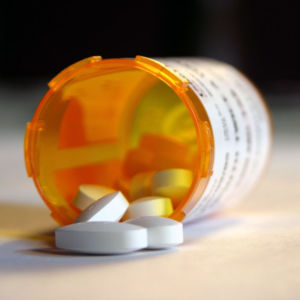Among the most striking effects of the overhead built into the annual national cost of our dysfunctional healthcare system has been the outsourcing to China of the manufacture of many pharmaceuticals and medical supplies used here at home.
Part of that historic shift has been a change in the sourcing of the active pharmaceutical ingredients (APIs) that go into our medicines and vitamins. In the 1990s, 90 percent of the world’s APIs came from the U.S., Europe, and Japan. China is now the largest global supplier of APIs.
The effect on the quality of the supplies in America’s medicine chest has been alarming. Shortages and contaminated products are chronic and constitute a slowly unfolding healthcare crisis for the United States. But a national security threat of incalculable measure has developed out of our country’s reliance on China for drugs, protective equipment, and medical supplies.
By driving up all of the costs of needless overhead in our healthcare system, we compelled our manufacturing sector to seek lower labor costs in China. We now see that this manufacturing must be brought home or placed within the borders of staunch allies. Despite the many obstacles that stand in the way of doing that, it would be a supreme, historic folly to delay. We cannot wait until the next pandemic to address this threat.
In 2022, China has become the source of approximately 40 percent of the world’s Active Pharmaceutical Ingredients (APIs), the chemical building blocks that are critical to making drugs. Few in the United States, even among physicians, are fully aware of just how drastic our dependence has become.
Here are just a few examples. Approximately 97 percent of antibiotics used in the United States, including drugs as basic as penicillin and amoxicillin, now come from China. And almost all of the contrast dye needed for many diagnostic procedures originates in a single facility in Shanghai, which recently closed because of a COVID-related lockdown. Putting all our eggs in one or a few baskets concerning medically related supplies demonstrated severe consequences, as across the United States, physicians now warn that rationed and deferred diagnostic procedures as a result of this closure, will inevitably have medically unfortunate consequences.
Much of the personal protective equipment (PPE), so much in the forefront of the news during the worst of the pandemic in 2020, also originates in China. The country where the pandemic erupted suddenly needed the PPE in short supply in the United States.
But of equal seriousness to the risks associated with reductions in or cutoffs of these desperately needed supplies exported from China is the chronically vexing question of the quality and safety of those exports.
A few examples:
Chinese-made KN95 masks were found to be substandard during the pandemic. Just before COVID-19 struck, eight million Chinese-made surgical gowns were recalled for not having been produced under sterile conditions.
In 2019, three commonly used blood pressure medications manufactured in China were found to be tainted with carcinogens.
In 2008, news reports compelled the Food and Drug Administration (FDA) to acknowledge that 81 deaths from contaminated heparin—made in China and sold worldwide—had been produced in a facility the FDA had not inspected. 81 Given the dramatic shift by the United States to foreign-made medications and supplies, it is not surprising that the FDA has struggled to keep up with its legally required inspections of manufacturing facilities overseas. And when the pandemic hit, inspections stopped.
The implications for public health and national security are staggering. By inspecting only a small fraction of Chinese manufacturing plants and their output, the FDA fails to perform its primary duty of ensuring drug and product safety. This puts Americans in harm’s way.
Medications with ingredients from China are used in the United States for routine surgeries, common and less-common infections, psychiatric disorders, cancer, and seizures. Those with chronic diseases who must take medication and the young who have years ahead of taking these medications are most at risk of developing cancers and other long-term complications from possibly tainted products that have not yet been detected.
In May 2020, Sen. Marco Rubio (R-Fla.) and Sen. Elizabeth Warren (D-Mass.) introduced the bipartisan “Strengthening Supply Chains for Service Members and Security Act” (H.R.6374). The bill would implement the recommendations from a previous Department of Defense Office of Inspector General (DOD OIG) report to address the nation’s overreliance on foreign-made pharmaceuticals.
Tariffs imposed during the Trump years and sustained, at least so far, by the Biden administration were a step in the direction of stimulating domestic production of the class of products discussed above.
America must reclaim the manufacture of its medical supplies and critical drugs made from safe APIs. Those who shape our trade policy and create the ground rules that have driven the decisions of American corporations to send manufacturing abroad must act now to reverse course. The FDA must strengthen its staffing for auditing foreign manufacturers that are significant vendors in our supply chain. Any foreign country’s refusal to allow free and timely access to production facilities must be fined and either suspended or terminated as a vendor.
The proverbial Sword of Damocles dangles above us. To the greatest degree and by any policy and regulatory means, including taxation rates, the United States must bring home the production of the ingredients that go into a revitalized domestic manufacture of the tools we use to care for our sick. Posthaste.
Please follow DVJournal on social media: Twitter@DVJournal or Facebook.com/DelawareValleyJournal

